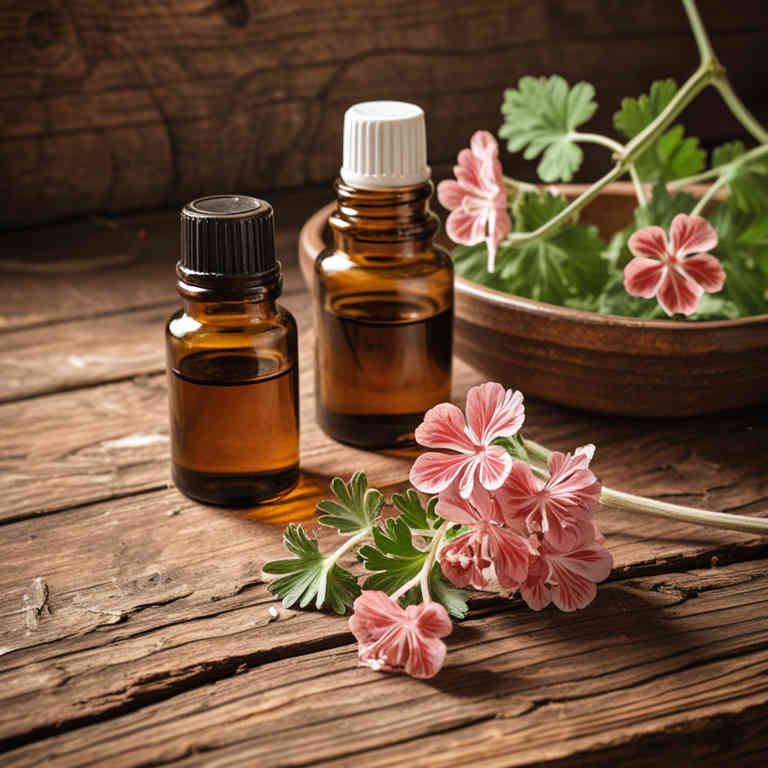Pelargonium graveolens essential oil for medicinal use

Pelargonium graveolens essential oil is a concentrated aromatic compound derived from the leaves of the geranium plant.
It is widely used in herbalism for its antimicrobial, anti-inflammatory, and calming properties. This essential oil is often employed to support respiratory health, alleviate stress, and promote skin healing. It can be applied topically, inhaled through diffusion, or diluted for internal use under professional guidance.
Its versatility makes it a valuable remedy in both traditional and modern holistic practices.
Uses
Pelargonium graveolens essential oil has been used to treat various ailments for centuries, with its roots in ancient herbal medicine.
Historically, it was valued by indigenous cultures for its antimicrobial and antifungal properties, often used to treat skin infections and wounds. In traditional practices, it was also employed to alleviate respiratory issues such as colds and coughs. Modern applications include its use in aromatherapy for stress relief and as a natural insect repellent.
Today, it is widely recognized for its therapeutic benefits in both alternative and complementary medicine.
Benefits
Pelargonium graveolens essential oil has health benefits such as antimicrobial, anti-inflammatory, and stress-reducing properties.
It is commonly used in aromatherapy to promote relaxation and improve mood. This essential oil can also support respiratory health by helping to alleviate symptoms of congestion and coughing. Its antimicrobial properties make it useful in treating skin infections and promoting wound healing.
Additionally, it may aid in digestion and help relieve symptoms of nausea and indigestion.
Constituents
Pelargonium graveolens essential oil active constituents include limonene, geraniol, linalool, and citronellol.
These compounds contribute to its antimicrobial, anti-inflammatory, and calming properties. Limonene is known for its antioxidant effects, while geraniol exhibits antimicrobial activity. Linalool is valued for its soothing and stress-relieving benefits.
Citronellol is often used for its ability to repel insects and support respiratory health.
Preparation
To make Pelargonium graveolens essential oil, first harvest fresh leaves from the plant, ensuring they are clean and free from pesticides.
Next, place the leaves in a glass jar and cover them completely with a high-quality carrier oil, such as fractionated coconut oil. Let the mixture steep in a cool, dark place for 4 to 6 weeks, shaking the jar gently every few days. After the steeping period, strain the mixture through a fine mesh or cheesecloth to separate the oil from the plant material.
Finally, store the essential oil in a dark glass bottle away from light and heat to preserve its potency and aroma.
Side Effects
Pelargonium graveolens essential oil may lead to skin irritation or allergic reactions when applied topically, especially if not diluted properly.
It is commonly used for its antimicrobial and anti-inflammatory properties, making it popular in aromatherapy and natural remedies. However, ingestion of this essential oil can be toxic and may cause nausea, vomiting, or more severe systemic effects. Prolonged use or high concentrations may lead to sensitization or respiratory issues in some individuals.
It is important to consult a healthcare professional before using this preparation, particularly for pregnant women, children, or those with existing health conditions.